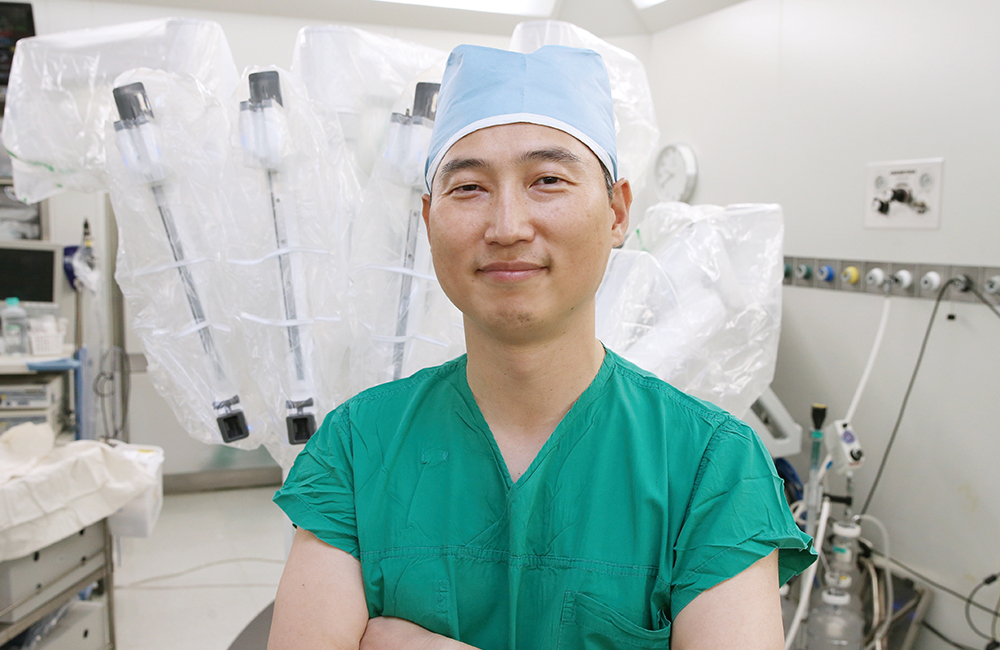-
- Global AMC MENU
- NEWS
- HEALTH
- PEOPLE
- Introduction

Enhanced precision is a major advantage of robotic surgery. Three robotic arms controlled by a surgeon cut and suture the smallest parts of the body to minimize damage to neurons or blood vessels that may cause complications. Last year, Asan Medical Center (AMC) recorded the highest number of robotic surgeries in South Korea as 4,371 robotic surgeries were performed. This achievement has been made after 15 years since robotic surgery was introduced in AMC. The interview with Professor Yong Sik Yoon, the Director of the Robotic Surgery Training Center, tells us more about the present and future of robotic surgery.
What is the current state of robotic surgery at AMC?
Currently, 60 surgeons from 13 departments including Department of Urology, Division of Colon and Rectal Surgery, and Division of Liver Transplantation and Hepatobiliary Surgery are practicing robotic surgery, using 7 surgical robots in 3 Rosettes. I reckon there is no place in the world other than AMC that efficiently uses robotic equipment in such a variety of medical departments. As more and more departments and surgeons are involved, a sharp increase in the number of robotic surgeries has been observed recently for areas that require interdisciplinary care such as esophageal cancer and breast reconstruction compared to other medical institutions. A lot of requests are coming in to learn AMC’s robotic surgery skills and operation while only limited training programs are available due to the COVID-19 pandemic. It is expected that a greatly increased number of overseas physicians will visit AMC when the time comes for international academic exchanges to take place freely.
What are the roles of the Robotic Surgery Training Center?
The Robotic Surgery Training Center provides assistance to each medical department for efficient use of robotic surgical system such as resolving different opinions about robotic surgery, supporting trials using surgical robots, and assist training programs for medical experts and staff. Thanks to such endeavors and cooperation of many medical professionals, AMC takes pride in the excellent management system, demonstrating the highest level of efficiency in the number of surgeries per equipment. The Center is also committed to research on the qualitative aspects of robotic surgery such as application expansion and system operation.
How would you picture the future of robotic surgery?
With the development of technologies related to surgical equipment, more and more robotic surgical systems are also offering enhanced precision and becoming smaller in size. For example, four different versions of the da Vinci Surgical System, used worldwide, have been created over the past two decades. The changes over time have resulted in facilitated operation and smaller, more diverse robot arms. It even may become possible for robots to perform automated surgeries in the future like we see in SF movies.
Are there any words you would to share?
Robotic surgery of AMC has been established by experienced, senior professors who are renowned in the relevant academic field and has been passed down to junior professors today. I would like to express my gratitude to former directors of the Robotic Surgery Training Center for their unsparing advice and support, sub-committee chairperson and commissioners for their collaborative efforts, and Coordinator Yujin Yun of the Center.












